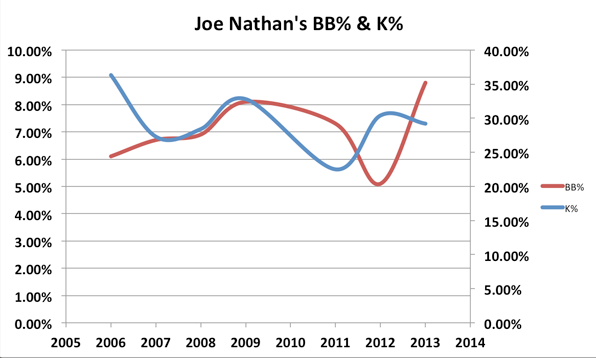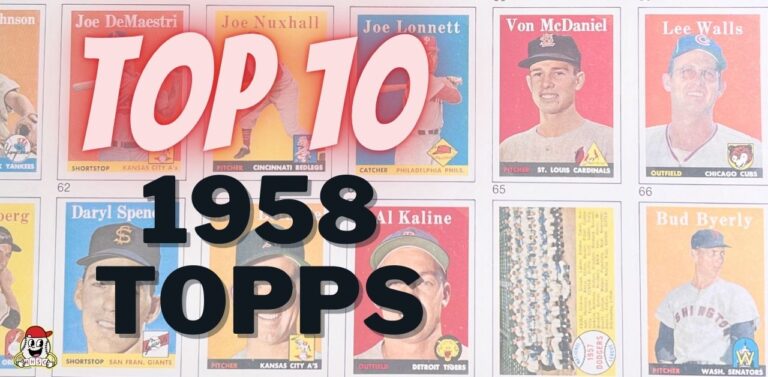This post will wrap up our series on 2014 Fantasy Baseball busts. We’ve looked at outfielders, infielders, starting pitchers, and now we will examine closer busts. As a supplement to this discussion we will look at the velocity loss leaders from 2013 at the end of the post. More so than any other position in …
Closer Busts: Top 38 Relievers by Steamer & Oliver Projections
This post will wrap up our series on 2014 Fantasy Baseball busts. We’ve looked at outfielders, infielders, starting pitchers, and now we will examine closer busts. As a supplement to this discussion we will look at the velocity loss leaders from 2013 at the end of the post.
More so than any other position in Fantasy Baseball, a closers’ value is based primarily on opportunity. The best middle relief pitcher is not as valuable as the worst closer; saves are all that matter. As long as a pitcher gets the opportunity to pitch in the ninth inning, he can be a valuable Fantasy asset. Ask Shawn Chacon about his 2004 season, and he’ll be able to attest.
That said I’ve chosen to rank any pitcher that has a likely possibility to close in 2014 (i.e. Jake McGee), and all closers that were ranked in the top 132 pitchers for last year’s final roto ranks (i.e. Edward Mujica).
(If you read the previous two articles you can skip the next two paragraphs, which describe how we define a bust.)
To ascribe an analytic value to how we quantify a bust, we will look at a player’s 2013 roto value and a hybrid of their Steamer and Oliver projections.
Bust: Our formula for a bust will be a player’s projected 2014 roto value—this forecasted value will be composed of an average between a player’s Steamer and Oliver projections—minus their 2013 roto value. (Values will be calculated for a 12-team 5×5 roto league)
Steamer & Oliver Closer Ranks
[table id=30 /]
*Rosenthal, McGee, Robertson, Hunter, Jones, Axford, and Hawkins did not finish in the top 132 pitchers from last year so their is no 2013 rank for them, but I thought it would be helpful to look a their projection for this year.
Fernando Rodney: Free Agent

Rodney is the first big name on this list that is projected to have a drop off from last year to this year. However this projection should be discredited more than it should be valued. Steamer and Oliver project Rodney to have a minimal amount of saves in 2014, but there will most likely be one team (i.e. the Mariners or Orioles) that bite the bullet and pay for Rodney’s services. Rodney is actually projected by Steamer and Oliver to have a better ERA in 2014—2.88 for the former and 3.18 for the latter—than he did last year.
Joe Nathan: Detroit Tigers
Since 2006 Joe Nathan’s control has headed north, while his K% has trended in the wrong direction. Last year was his worst year as far as BB% goes since 2003, which could be a sign that his control or stuff has begun to slip.  Control aside, all five of Nathan’s pitches’ velocity was down, and he threw his fastball less than he ever has before (38.2%) and his slider more than he ever has before (33.8%). With Nathan’s age in mind, it makes one think about whether or not his arm will be able to handle the wear and tear that comes along with heavy slider usage at an advanced age.
Control aside, all five of Nathan’s pitches’ velocity was down, and he threw his fastball less than he ever has before (38.2%) and his slider more than he ever has before (33.8%). With Nathan’s age in mind, it makes one think about whether or not his arm will be able to handle the wear and tear that comes along with heavy slider usage at an advanced age.
Rex Brothers: Colorado Rockies
It’s been stated that the Rockies plan to use LaTroy Hawkins as their closer when the 2014 season opens up, but Hawkins will be 41 when the season begins, and Brothers is sure to receive some save opportunities when/if Hawkins performs poorly or makes a trip to the DL. But should you be interested when/if Brothers’ time comes? His projection says otherwise, but his velocity loss says more on that as well. Of any qualified reliever from last season, Brothers lost the sixth most average velocity on his four seem fastball from 2012 to 2013. It still remains to be seen whether of not a loss in fastball velocity is correlated with an overall slip in performance—I should probably look into it myself—but it gives you a reason to pause about Brothers or anyone atop the list below.
Velocity Loss Leaders (Relief Pitchers)
[table id=31 /]
*vFA stands for four seam fastball and vFT stands for two seam fastball.
 Devin Jordan is obsessed with statistical analysis, non-fiction literature, and electronic music. If you enjoyed reading him, follow him on Twitter @devinjjordan.
Devin Jordan is obsessed with statistical analysis, non-fiction literature, and electronic music. If you enjoyed reading him, follow him on Twitter @devinjjordan.








